全站搜索
Search the entire website
Search the entire website
Manganese ore can generate gray-white brittle metallic element, that is, Manganese, which is alloyed with steel to increase strength, hardness, wear resistance, and other properties and with other metals to form highly ferromagnetic materials.
ZONEDING MACHINE builds equipment for processing minerals. ZONEDING makes crushing machines. ZONEDING makes them for many types of rock. Manganese ore is one type. It often has a big problem: it can be very sticky and wet. This makes crushing and sorting hard. A manganese ore crushing plant must handle this problem well. If it does not, the machines can get stuck. This stops the whole plant. This loses you money. ZONEDING will explain how to crush sticky manganese ore. ZONEDING will show you how to get the right size ore for your next steps. This helps you get the most manganese from your ore. This makes your operation run smoothly.
Here are very common Manganese ore crushing plants for reference. They have been proven by practice. And they have the advantages as follows:
Manganese ore comes out of the ground. Sometimes it is dry. But often it is wet. It can have a lot of clay mixed in. This makes it sticky. Imagine wet clay. It sticks to everything. This is what sticky manganese ore does. It sticks to the machines. It sticks to the conveyors that move the rock. It sticks to the screens that sort the rock by size. This causes big problems in a manganese ore crushing plant. When the rock sticks, it builds up inside the crushers (, Cone Crusher). It covers the holes in the screens (Vibrating Screen). This stops the rock from moving. The machines get clogged. This is like a “traffic jam” in your plant.
When the machines are clogged, they stop working. The whole plant stops. This means you are not crushing ore. You are not producing manganese. Every hour the plant is stopped, you lose money. Clearing these blockages takes time. It takes labor. It can also be dangerous work. Sticky ore also means you make fine mud. This mud can wrap around the manganese particles. It makes it hard to separate the manganese later. This can lower how much manganese you recover. It is like trying to wash sand when it is covered in mud. The mud stops the water from reaching the sand. So, dealing with sticky, wet manganese ore is not a small issue. It is a major challenge. Your crushing and screening machines must handle this well. Your plant design must help the ore flow smoothly.
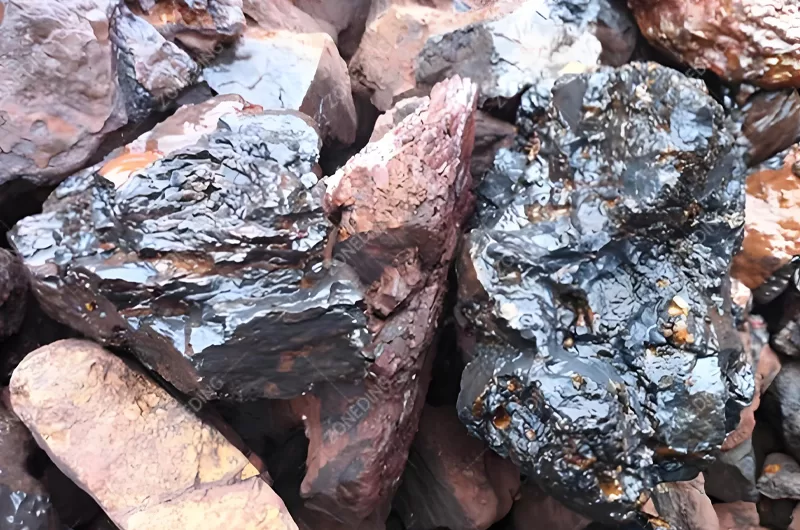
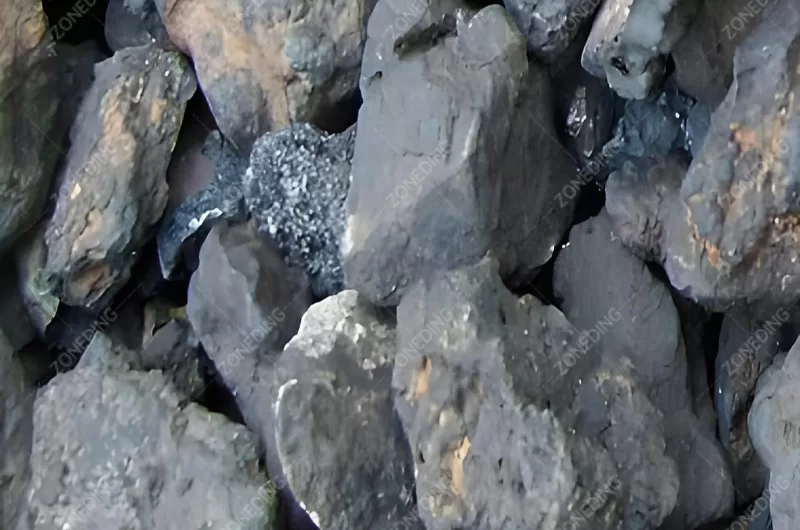
Sticky manganese ore often has fine clay particles. When water is present, these clay particles become like glue.
Not all crushing and screening machines handle sticky, wet manganese ore well. Some types are much better. For the first crushing step, taking big rocks, a Jaw Crusher is often a good choice. Jaw Crushers break rock by squeezing it between plates. They have a simple design. They have a large opening. This helps them take in bigger, rougher pieces of ore. Even if it is a bit sticky, a strong jaw crusher can usually handle it. You must make sure the opening size is right. The angle of the crushing chamber helps material move down.
After the primary crusher, you need to break the ore smaller. You also need to sort it. Cone Crushers are common for secondary crushing. They also squeeze rock. They are good for making smaller, consistent product. However, Cone Crushers can sometimes get choked by very sticky material. A wide setting helps. Careful feeding is key. For screening sticky ore, regular screens (Vibrating Screen) with wire mesh can get blinded. This means the holes get covered with sticky mud. Screens designed for wet or sticky material work better. These might use rubber or polyurethane panels with special shapes or openings that vibrate strongly. They might also use methods to clean the screen surface as it works. Sometimes, you need to wash the ore before crushing or screening. This removes the sticky clay first. A washing machine (Sand Washing Machine) or a wet screen can do this.
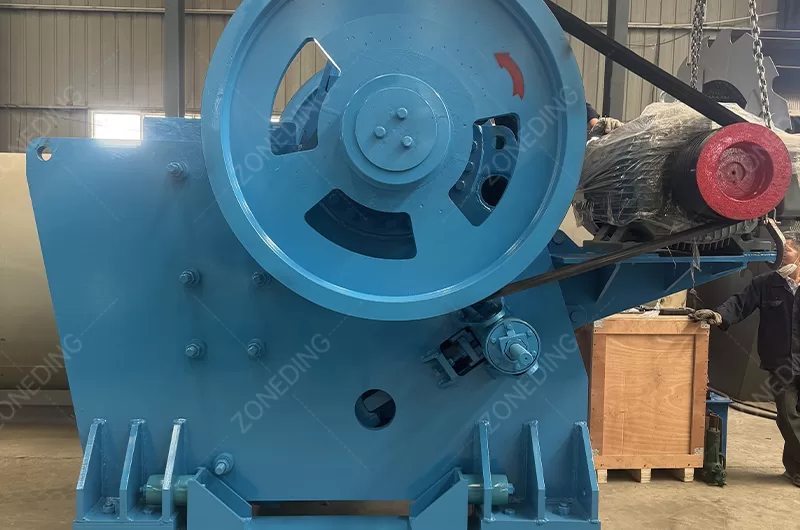
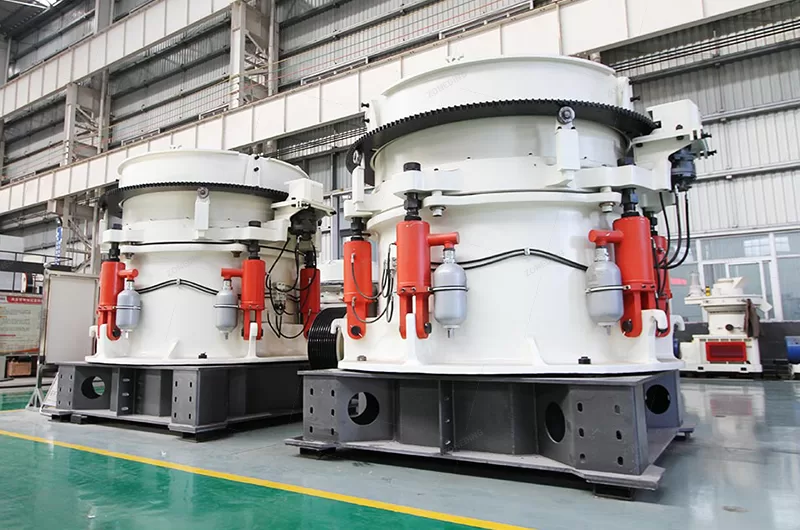
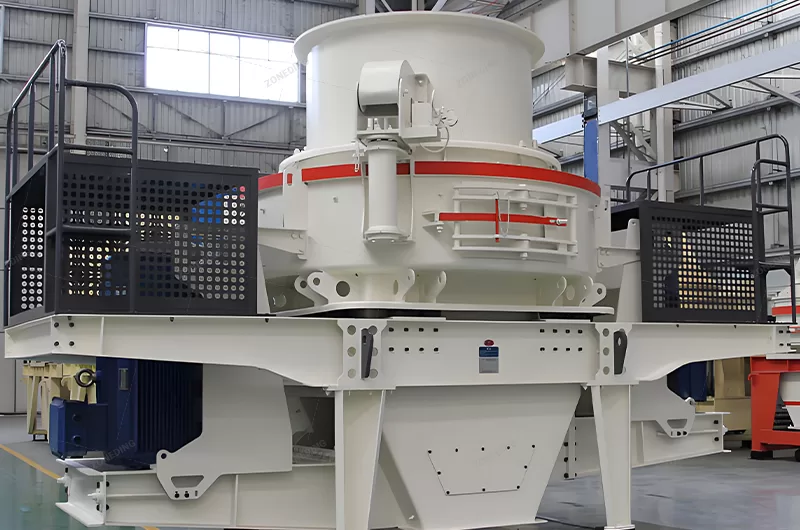
Choosing the right crusher type helps avoid plant stops.
A smart plant design is key to handling sticky manganese ore. It is not just about buying the right machines. It is about how you put them together. The goal is to keep the ore moving. You want to avoid any places where sticky material can build up. This means thinking about the whole process flow. From where the ore enters the plant, through crushing, screening, and moving to the next step. Every transfer point, chute, and hopper must be designed to prevent sticking.
One important strategy is pre-screening or pre-washing. If your ore has a lot of sticky clay, sometimes the best thing is to screen out the fine, wet material before it enters the crushers. This can be done with a special screen or a washing step (Sand Washing Machine). Removing the sticky fines early reduces the load on the crushers and screens. This makes the main crushing process much smoother. Using feeders (Vibration Feeder) that can handle sticky material is also important. They must feed the crushers steadily. Chutes and hoppers should be designed with steep angles. They should have liners made of materials that sticky ore does not stick to easily. Think smooth plastics like UHMWPE. Screens (Vibrating Screen) designed for sticky ore, with self-cleaning features or special panel types, are essential. A process that allows for easy inspection and cleaning of potential build-up areas is also helpful. You need to be able to find problems early. You need to fix them quickly. This keeps the plant running.
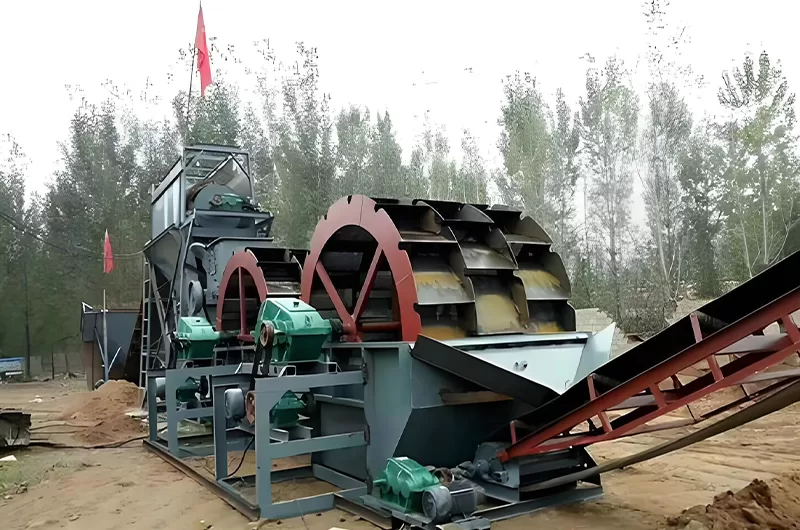
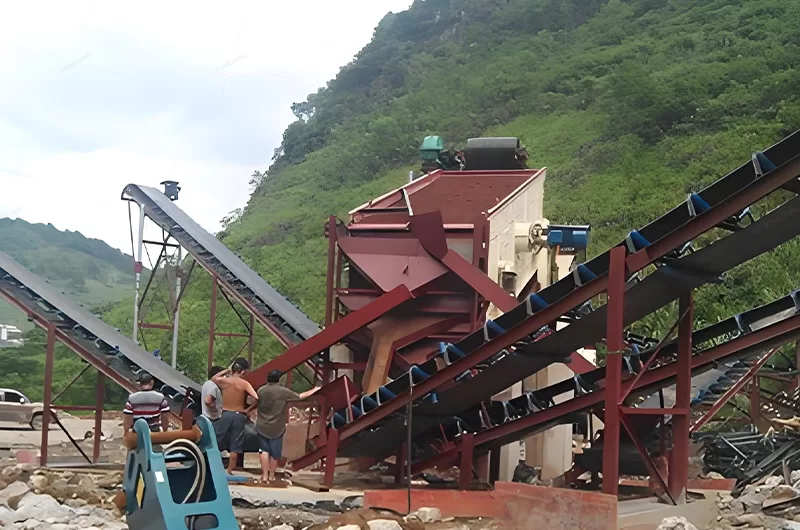
Manganese ore is not just “manganese ore”. It has different mineral forms. The two main types are oxide manganese ores and carbonate manganese ores. These types behave differently when you crush them. They also need different processes later to get the manganese out. This means your crushing plant might need different settings or even different machines depending on which type of ore you are processing. An expert will test your ore sample. They will tell you what minerals are in it. This is very important for planning the plant.
Oxide manganese ores (like pyrolusite) are usually harder. They are often more dense than the waste rock around them. This difference in density means you can often use gravity separation methods (like Jigging Separator Machines or Shaking Table) to recover the manganese. For these ores, you need to crush the ore to a size where the manganese particles are separate from the waste rock. This is called liberation. You need to get liberation, but you should avoid making too much fine mud. Fine mud is bad for gravity separation. So, the crushing process for oxide ores focuses on controlled breaking to a medium size range.
Carbonate manganese ores (like rhodochrosite) are often less dense. The density difference between the manganese mineral and the waste rock is smaller. Gravity separation might not work as well. You might need to use other methods like magnetic separation (Magnetic Separator) or flotation (Flotation Machine). These methods often require the ore to be crushed and ground to a much finer size. So, the crushing process for carbonate ores might need more crushing stages. It must produce material that is a good feed size for a grinding mill (Ball Mill). The goal is to make grinding easier and more efficient. Crushing also helps liberate minerals. This makes magnetic separation or flotation work better. Understanding your ore’s mineral type is key to setting up the crushing process right.
| Manganese Ore Type | Common Recovery Method | Density Difference | Crushing Goal | Fines Control |
|---|---|---|---|---|
| Oxide | Gravity Separation | Larger | Liberate at medium size, prepare for jigs/tables | Critical |
| Carbonate | Magnetic/Flotation | Smaller | Prepare for fine grinding in mills, liberate | Important |
After crushing manganese ore, the material goes to the next step. This step is called beneficiation. Beneficiation is where you separate the valuable manganese minerals from the waste rock. The method you use (gravity, magnetic, flotation) needs the ore particles to be a certain size. Getting the size right is extremely important. If the crushed rock is too big, the manganese mineral might still be stuck inside the waste rock. The beneficiation process cannot separate it. You lose manganese. If the crushed rock is too small, it makes too much fine mud (slimes). This fine mud can make the beneficiation process work poorly. It can reduce recovery. It can increase chemical use (for flotation). It can make gravity separation very difficult.
So, the manganese ore crushing plant must produce material within a specific size range. This is called the target particle size distribution. To control this size, you use screens (Vibrating Screen). Screens are like big sieves. They shake and sort the crushed rock by size. You use a series of crushers (Jaw Crusher, Cone Crusher) and screens in a loop. This is called a closed circuit crushing system. The rock passes through a crusher. Then it goes to a screen. Rock pieces that are already small enough go to the next stage (like beneficiation or grinding). Rock pieces that are too big go back to the crusher to be broken again. This loop ensures that the final product leaving the crushing circuit is within the desired size range. The screen mesh size is key. You must choose the right mesh size. You must keep the screens clean, especially with sticky ore. This system gives you precise control over your final product size. This control helps your downstream beneficiation process work at its best. It helps you recover more manganese.
Screens (Vibrating Screen) are your tool for size control.
Building a manganese ore crushing plant costs money. Buying the machines (Jaw Crusher, Cone Crusher), screens (Vibrating Screen), feeders (Vibration Feeder), conveyors, and other equipment is a big part. But this is only the start. You also pay for transporting the machines to your site. You pay for building the concrete foundations and structures. You pay people to put everything together (installation). Getting permission from the government costs money too. These are initial costs.
Once the plant is running, you have ongoing costs. Electricity is a major cost. Crushing rock uses a lot of power. Wear parts wear out. Crusher liners, screen panels, conveyor belts need replacing. Manganese ore can be abrasive. Wear parts can wear out fast. This is a regular expense. You pay your staff to run and maintain the plant. Maintenance means fixing things that break. It also means doing planned work so things do not break later. If the plant stops unexpectedly, you lose money. This is lost production. Other costs include water for dust control or washing, grease, and oil. You must look at all these costs over the life of the mine. A cheaper machine might cost you more in the long run. It might use more power. It might need parts replaced more often. The goal is to crush each ton of ore for the lowest possible total cost.
| Cost Type | Examples | How to Manage |
|---|---|---|
| Initial Capital | Equipment (Jaw Crusher, Cone Crusher), Building, Installation | Plan carefully, choose reliable supplier |
| Operating Costs | Electricity, Wear Parts (Vibrating Screen), Labor, Maintenance | Choose efficient machines, use good parts |
| Downtime Costs | Lost production when plant is stopped | Prevent blockages, plan maintenance |
Lowering costs means making the plant run efficiently.
Mobile crushing plants are built on wheels or tracks. They can move around. They can move to different places in the mine. This can be very helpful for some manganese mining projects. If your manganese ore deposit is spread out, or if you need to move your crushing to follow the mining face, a mobile crusher might be a good idea. You can crush the ore closer to where it is mined. This reduces how far you need to haul the raw ore. Hauling ore by truck is expensive. Moving the crusher can save you a lot on transportation costs.
Can mobile crushers (Mobile Jaw Crusher, Mobile Cone Crusher) handle sticky manganese ore? Yes, they can. But they need the same features as a fixed plant to handle sticky ore. The crusher on the mobile unit must be suitable for sticky feed. The screen on the mobile unit must be designed to prevent blinding by sticky fines. The conveyors and chutes on the mobile unit need proper design and possibly liners. Mobile crushers are faster to set up than a big fixed plant. They offer flexibility. They are good for projects that start quickly or move often. However, they might have less total crushing capacity than a very large fixed plant. They might use diesel power, which can cost more than electricity from the grid. So, while a mobile manganese ore crushing plant can handle sticky ore if built right, you need to compare its advantages (flexibility, fast setup, reduced hauling) against its possible disadvantages (capacity limits, potentially higher energy costs) for your specific project.
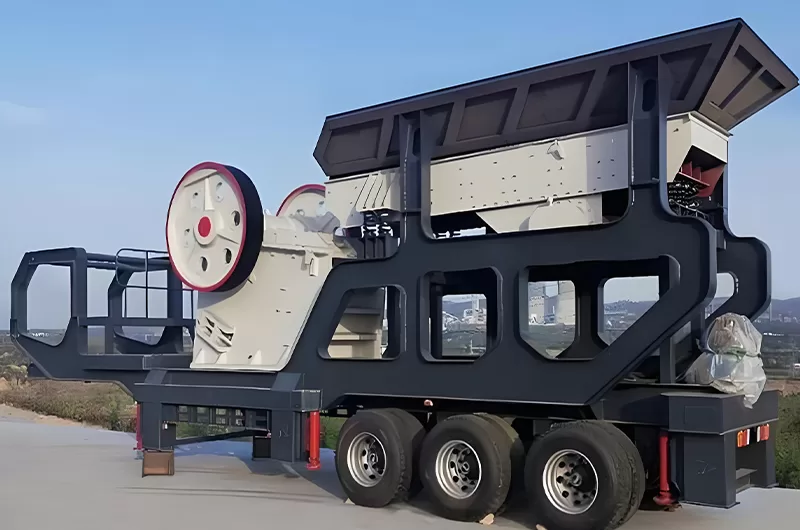
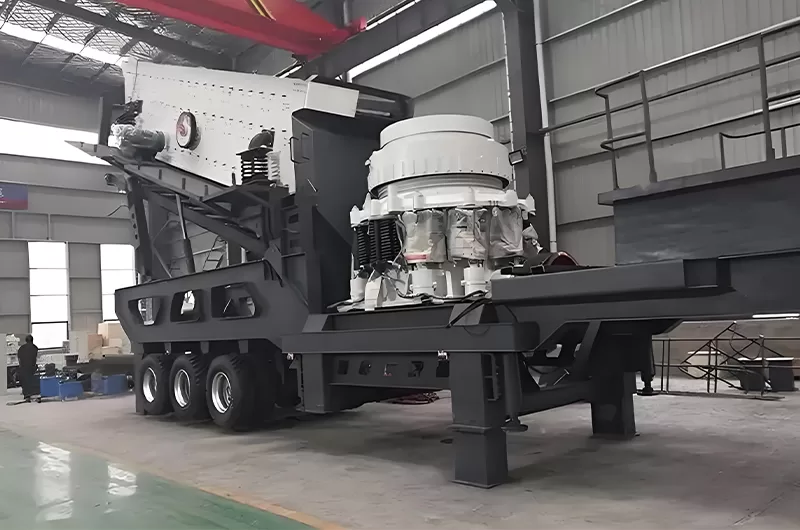
Choosing the right company to provide your manganese ore crushing plant is a key decision. You need a partner who really understands manganese ore. Manganese ore can be sticky. It has different mineral types. It needs specific processing. A good supplier knows these challenges. They understand how sticky ore affects crushing and screening. They know how different manganese mineral types need different crushing goals. The crushing plant must work well with the next steps in your process (like gravity or magnetic separation).
Look for a supplier with long experience in mineral processing equipment. Ask about their projects involving manganese ore. They should have engineers who will study your specific ore. They should ask for samples to test its properties (stickiness, hardness, mineral type). They will use this information to design a plant. This plant will be right for your ore. It will be right for your required final product size. It will be right for your downstream process. A strong supplier provides more than just machines. They offer a complete solution. This includes helping you design the plant layout. They manufacture reliable machines. They help with installation at your mine site. They train your operators. They provide ongoing support and spare parts. Getting the most manganese from your ore starts with the crushing plant. You need a partner who can design and supply a crushing solution that handles your ore’s specific problems. ZONEDING has many years of experience. We understand manganese ore. We design customized solutions. We can help you get the best results.
Q 1: Why is sticky manganese ore hard to crush?
A: Sticky manganese ore often has clay and water. This makes it stick to machines. It clogs crushers and screens. This stops the plant from running smoothly.
Q 2: What type of screen is best for wet manganese ore?
A: Screens (Vibrating Screen) with rubber or polyurethane panels designed to prevent blinding are best. They vibrate strongly. This helps sticky material pass through.
Q 3: Do I need to wash manganese ore before crushing?
A: Maybe. If your ore has a lot of sticky clay, washing it first can remove the clay. This makes crushing and screening much easier. It helps avoid blockages.